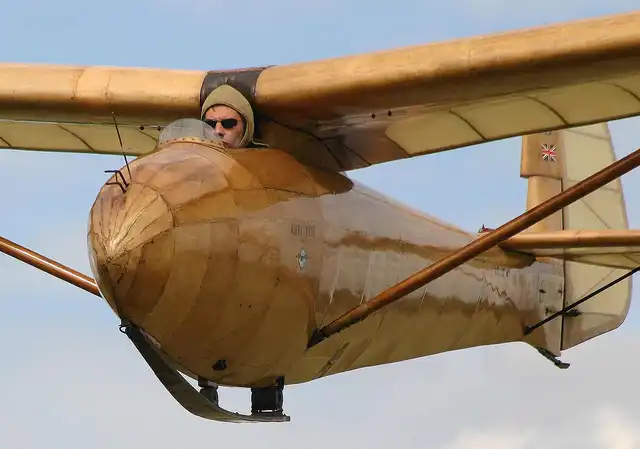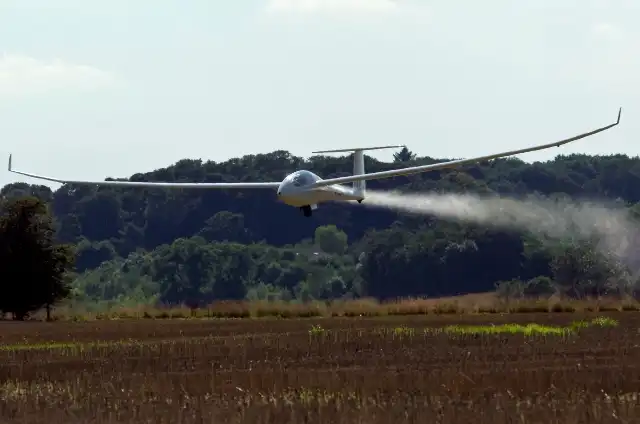History of Gliding
Birth of Gliding
The development of heavier-than-air flight in the half century between Sir GeorgeCayley’s coachman in 1853 and the Wright brothers mainly involved gliders (seeAviation history). However, the sport of gliding only emerged after the FirstWorld War, as a result of the Treaty of Versailles, which imposed severerestrictions on the manufacture and use of single-seat powered aircraft inGermany’s Weimar Republic. Thus, in the 1920s and 1930s, while aviators andaircraft makers in the rest of the world were working to improve the performanceof powered aircraft, the Germans were designing, developing and flying ever moreefficient gliders and discovering ways of using the natural forces in theatmosphere to make them fly farther and faster. With the active support of theGerman government, there were 50,000 glider pilots by 1937. The first Germangliding competition was held at the Wasserkuppe in 1920, organized by OskarUrsinus. The best flight lasted two minutes and set a world distance record of 2kilometres (1.2 mi). Within ten years, it had become an international event inwhich the achieved durations and distances had increased greatly. In 1931,Gunther Grönhoff flew 272 kilometres (169 mi) on the front of a storm fromMunich to Kadaň (Kaaden in German) in Western Czechoslovakia, further than hadbeen thought possible.

Increasing popularity
In the 1930s, gliding spread to many other countries. In the 1936 SummerOlympics in Berlin gliding was a demonstration sport, and it was scheduled to bea full Olympic sport in the 1940 Games. A glider, the Olympia, was developed inGermany for the event, but World War II intervened. By 1939 the major glidingrecords were held by Russians, including a distance record of 748 kilometres(465 mi). During the war, the sport of gliding in Europe was largely suspended,though several German fighter aces in the conflict, including Erich Hartmann,began their flight training in gliders.
Gliding did not return to the Olympics after the war for two reasons: a shortageof gliders, and the failure to agree on a single model of competition glider.(Some in the community feared doing so would hinder development of new designs.)The re-introduction of air sports such as gliding to the Olympics hasoccasionally been proposed by the world governing body, the FédérationAéronautique Internationale (FAI), but has been rejected on the grounds of lackof public interest.
Modern Gliders
In many countries during the 1950s a large number of trained pilots wanted tocontinue flying. Many were also aeronautical engineers who could design, buildand maintain gliders. They started both clubs and manufacturers, many of whichstill exist. This stimulated the development of both gliding and gliders, forexample the membership of the Soaring Society of America increased from 1,000 to16,000 by 1980. The increased numbers of pilots, greater knowledge and improvingtechnology helped set new records, for example the pre-war altitude record wasdoubled by 1950, and the first 1,000-kilometre (620 mi) flight was achievedin 1964. New materials such as glass fibre and carbon fibre, advances in wingshapes and airfoils, electronic instruments, the Global Positioning System andimproved weather forecasting have since allowed many pilots to make flights thatwere once extraordinary. Today over 550 pilots have made flights over 1,000kilometres (620 mi). Although there is no Olympic competition, there are theWorld Gliding Championships. The first event was held at the Samedan in 1948.Since World War II it has been held every two years. There are now six classesopen to both sexes, plus three classes for women and two junior classes.

The latest worldwide statistics for 2011 indicate that Germany, the sport’sbirthplace, is still a centre of the gliding world: it accounted for 27 percentof the world’s glider pilots, and the three major glider manufacturers are stillbased there. However the meteorological conditions that allow soaring are commonand the sport has been taken up in many countries. At the last count there wereover 111,000 active civilian glider pilots and 32,920 gliders, plus an unknownnumber of military cadets and aircraft. Clubs actively seek new members bygiving trial flights, which are also a useful source of revenue for them.